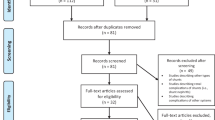Abstract
Introduction
The placement of cerebrospinal fluid (CSF) diversion devices requires an appropriate technical expertise associated with proper surgical training in order to minimize undue complications. This study sought to review a single institution’s experience with placement of external ventricular drains (EVD) and ventriculoperitoneal (VP) shunts as performed by neurosurgeons with procedure-specific training.
Methods
A retrospective database review was conducted for all patients who underwent intraventricular CSF diversion over a 5-year period from March 2003 to February 2008. Included in the analysis were ventriculostomy procedures that included EVDs, VP shunts, and ventriculoatrial shunts.
Results
A total of 138 patients underwent 212 ventriculostomy procedures. Seventy-one (51%) patients were male and sixty-seven (49%) were female. The median age was 50.1 years. A ventriculostomy-related hemorrhage was identified in 15 (7.1%) patients—4 of whom developed new symptoms. Twenty-six (12.3%) ventriculostomy catheters were malplaced as determined from post-procedural imaging. Ventriculostomy-related infections were identified in 7 (3.3%) patients, 4 of whom had EVDs and 3 of whom had VP shunts.
Conclusion
The placement of intraventricular catheters by neurosurgeons remains a relatively safe and effective procedure that is associated with infrequent rates of symptomatic hemorrhage and infection.
Similar content being viewed by others
References
Greenberg MS, Arredondo N. Handbook of neurosurgery. 6th ed. Lakeland, FL, New York: Greenberg Graphics, Thieme Medical Publishers; 2006.
Becker DP, Nulsen FE. Control of hydrocephalus by valve-regulated venous shunt: avoidance of complications in prolonged shunt maintenance. J Neurosurg. 1968;28:215–26.
Kothari RU, Brott T, Broderick JP, et al. The ABCs of measuring intracerebral hemorrhage volumes. Stroke. 1996;27:1304–5.
Ehtisham A, Taylor S, Bayless L, et al. Placement of external ventricular drains and intracranial pressure monitors by neurointensivists. Neurocrit Care. 2008; in press.
Maniker AH, Vaynman AY, Karimi RJ, et al. Hemorrhagic complications of external ventricular drainage. Neurosurgery. 2006;59:ONS419–424; discussion ONS415–24.
Roitberg BZ, Khan N, Alp MS, et al. Bedside external ventricular drain placement for the treatment of acute hydrocephalus. Br J Neurosurg. 2001;15:324–7. doi:10.1080/02688690120072478.
Zhong J, Dujovny M, Park HK, et al. Advances in ICP monitoring techniques. Neurol Res. 2003;25:339–50. doi:10.1179/016164103101201661.
Guyot LL, Dowling C, Diaz FG, et al. Cerebral monitoring devices: analysis of complications. Acta Neurochir Suppl (Wien). 1998;71:47–9.
Huyette DR, Turnbow BJ, Kaufman C, et al. Accuracy of the freehand pass technique for ventriculostomy catheter placement: retrospective assessment using computed tomography scans. J Neurosurg. 2008;108:88–91. doi:10.3171/JNS/2008/108/01/0088.
Aucoin PJ, Kotilainen HR, Gantz NM, et al. Intracranial pressure monitors. Epidemiologic study of risk factors and infections. Am J Med. 1986;80:369–76. doi:10.1016/0002-9343(86)90708-4.
Chan KH, Mann KS. Prolonged therapeutic external ventricular drainage: a prospective study. Neurosurgery. 1988;23:436–8. doi:10.1097/00006123-198810000-00005.
Kanter RK, Weiner LB, Patti AM, et al. Infectious complications and duration of intracranial pressure monitoring. Crit Care Med. 1985;13:837–9. doi:10.1097/00003246-198510000-00012.
Khanna RK, Rosenblum ML, Rock JP, et al. Prolonged external ventricular drainage with percutaneous long-tunnel ventriculostomies. J Neurosurg. 1995;83:791–4.
Winfield JA, Rosenthal P, Kanter RK, et al. Duration of intracranial pressure monitoring does not predict daily risk of infectious complications. Neurosurgery. 1993;33:424–30; discussion 421–30.
Zabramski JM, Whiting D, Darouiche RO, et al. Efficacy of antimicrobial-impregnated external ventricular drain catheters: a prospective, randomized, controlled trial. J Neurosurg. 2003;98:725–30.
Sloffer CA, Augspurger L, Wagenbach A, et al. Antimicrobial-impregnated external ventricular catheters: does the very low infection rate observed in clinical trials apply to daily clinical practice? Neurosurgery. 2005;56:1041–4; discussion 1041–4.
Buxton N, Turner B, Ramli N, et al. Changes in third ventricular size with neuroendoscopic third ventriculostomy: a blinded study. J Neurol Neurosurg Psychiatry. 2002;72:385–7. doi:10.1136/jnnp.72.3.385.
Author information
Authors and Affiliations
Corresponding author
Rights and permissions
About this article
Cite this article
Saladino, A., White, J.B., Wijdicks, E.F.M. et al. Malplacement of Ventricular Catheters by Neurosurgeons: A Single Institution Experience. Neurocrit Care 10, 248–252 (2009). https://doi.org/10.1007/s12028-008-9154-z
Received:
Accepted:
Published:
Issue Date:
DOI: https://doi.org/10.1007/s12028-008-9154-z




